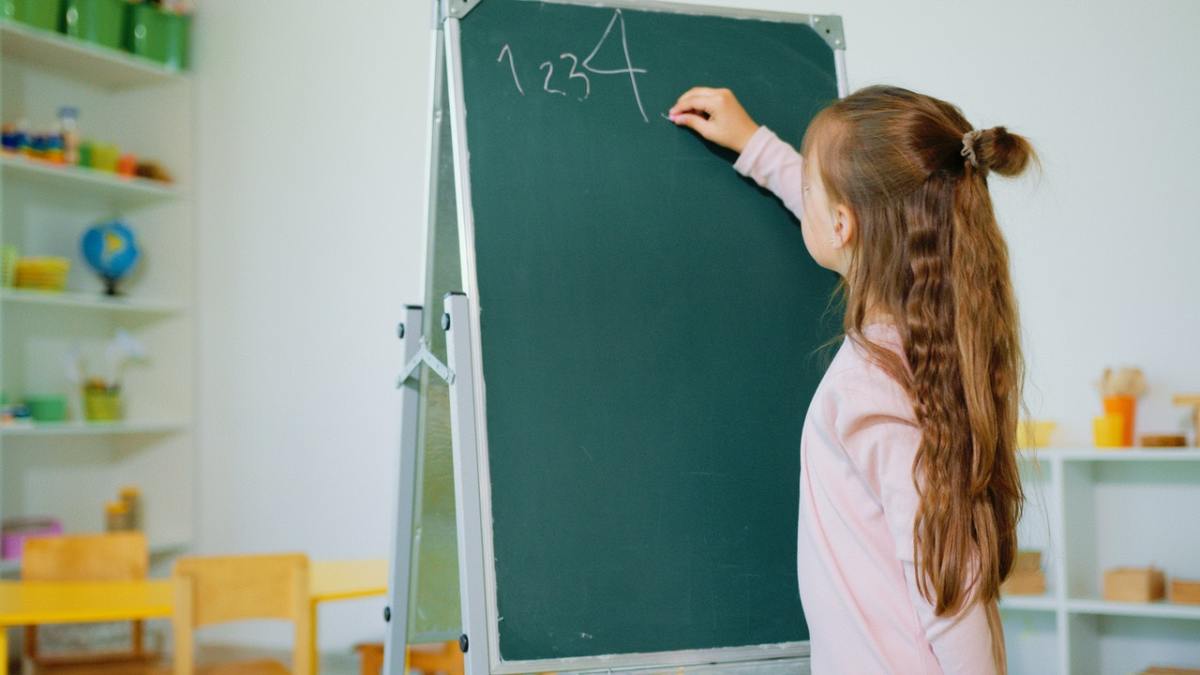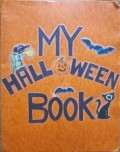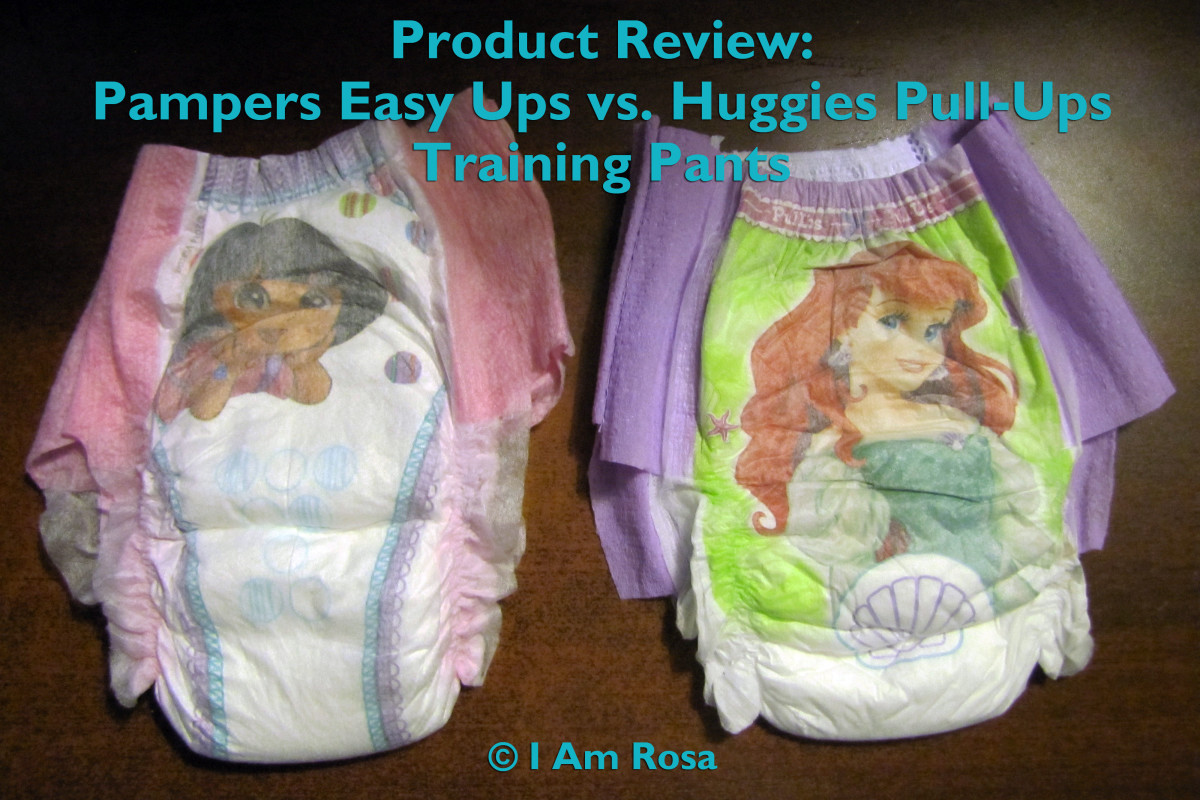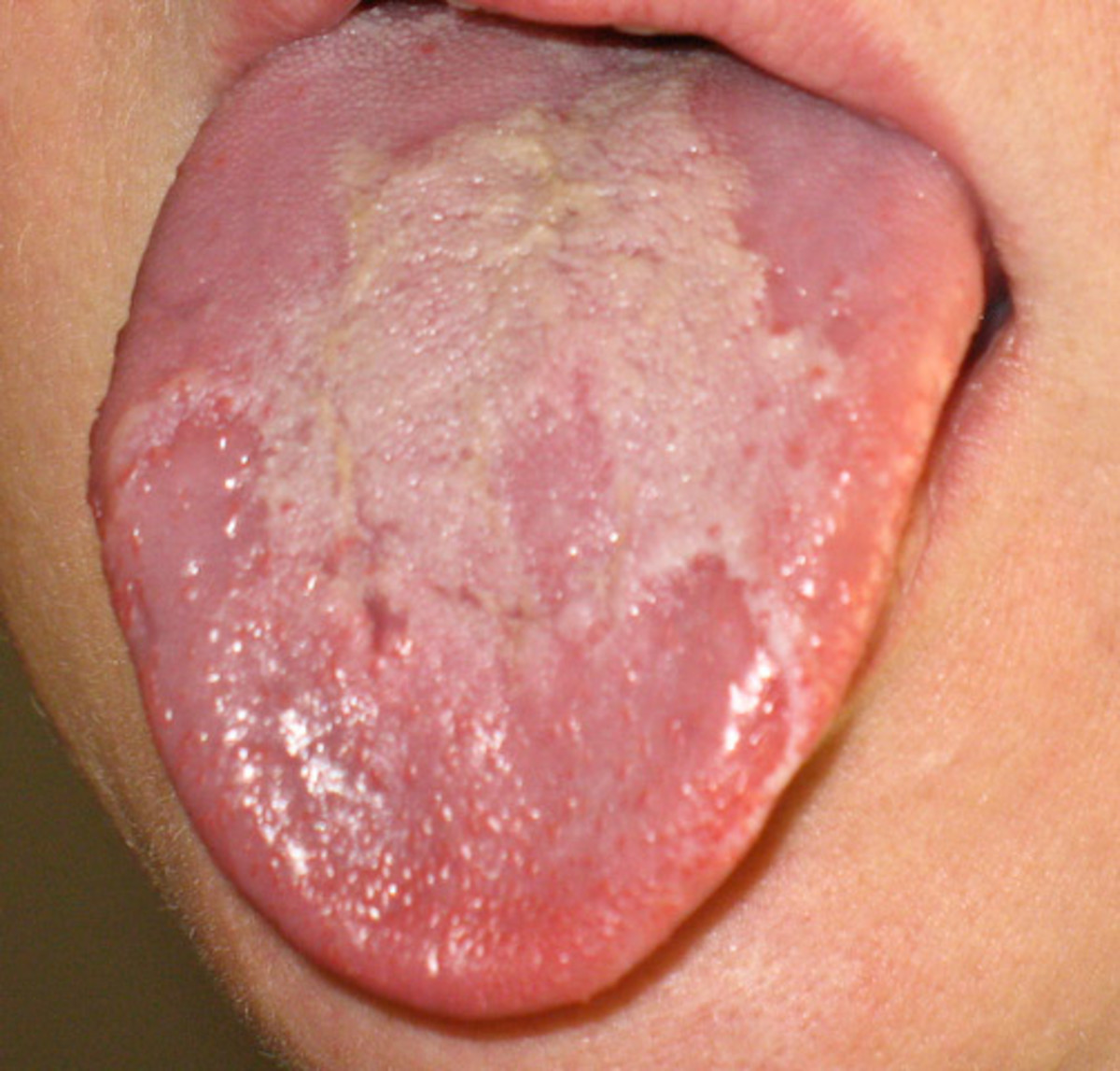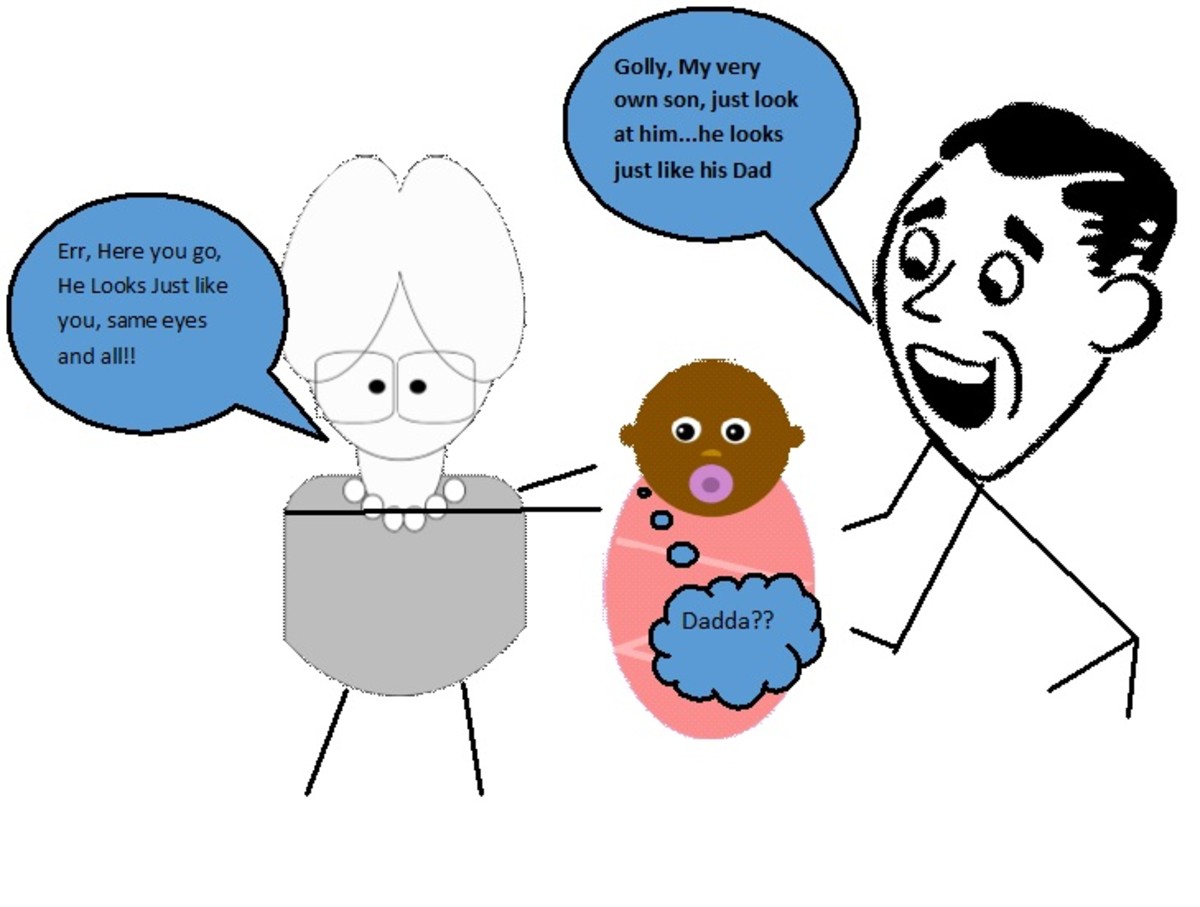Teaching Your Toddler or Baby Colors, Numbers, and Words Through Housework
Teaching From Birth
I knew I wanted to homeschool before my daughter was ever conceived. While I was pregnant, I spent more time picking out educational supplies than I did choosing a nursery theme.
- Flashcards
- Books
- Charts
- Educational toys
- Games
- Puzzles
- Art supplies
I knew that a good education began at birth, and I was determined to create a rich learning environment. I started her on the ABC song in hospital, and enthusiastically "taught" her every day.
Once she became mobile, that enthusiasm waned. One project led to a mess, which led to two more...and before I knew it, bedtime had arrived.
I was more likely to spend any free time playing with her and being silly than engaging in "real lessons".
But she was still curious. She wanted to learn. I needed a system that worked with me, so that I was teaching as I was taking care of business. I was tired of saying "no, no" all of the time.
I talked to some other homeschooling moms. Got some great tips. Customized the plan to fit my day. My plan?
Don't worry about a plan. Just let learning come naturally! I soon found that every lesson that needed to be taught was right there at my fingertips. My whole house was a classroom, and every task could be focused to teach my toddler her colors, numbers, shapes and more!
Exercise While You Work and Learn
Childhood obesity is on the rise. According to the CDC, 17% of children and adolescents are overweight. SO put on some upbeat music to get you in the mood to clean.
Dance through your housework and watch as your child imitates your movements. Combined with the walking, lifting, pushing, and pulling movements of housework, dancing will help both you and your toddler stay fit.
How to Make Chores Fun and Educational
The best and easiest way to begin is by talking! We often take everything in our homes for granted. We think to ourselves " need to wash dishes" or " I need to sweep". Babies watch us do all of these tasks, but do they know the words for what we are doing?
Communicate constantly to your child, as you do tasks. " I need to sweep the floor with the broom. This is the broom. What color is the broom? It is a blue broom." Point out items to your child as you go through the day.
Tables, chairs, windows, lights, beds, toys, books. Don't just say the words, ask where the items are as well. Even if your baby isn't old enough to understand, they will enjoy the interaction.
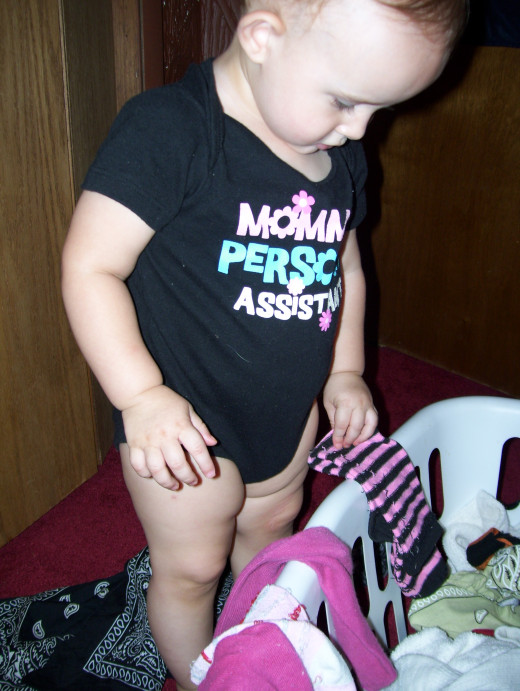
Tactile Learning
Laundry is my daughter's favorite chore. As much as I would love to hide it all away in a back closet and iron-as-needed, she thinks the entire process is fascinating. It was difficult, but I soon turned laundry day into an enjoyable experience.
I began used laundry as a big vocabulary booster. You can teach clean and dirty, the difference between the washer and the dryer, how much soap to measure out, etc.
While you are putting clothes on hangers, keep up the dialogue. " What color is this shirt? This is a red shirt. This is Daddy's red shirt. Here are your blue pajamas. We fold the pajamas like this." Then progress to where everyone's clothes go once they are folded.
A laundry basket offers a variety of possibilities. Not only can it teach toddlers all the colors of the rainbow, it can build vocabulary words, provide counting games, and offer a multitude of textures to explore. Clothes can be soft, smooth, stretchy, fuzzy, stiff,etc. It is a good time to point out the difference between shirts, pants, and dresses. Socks are an instant matching game.
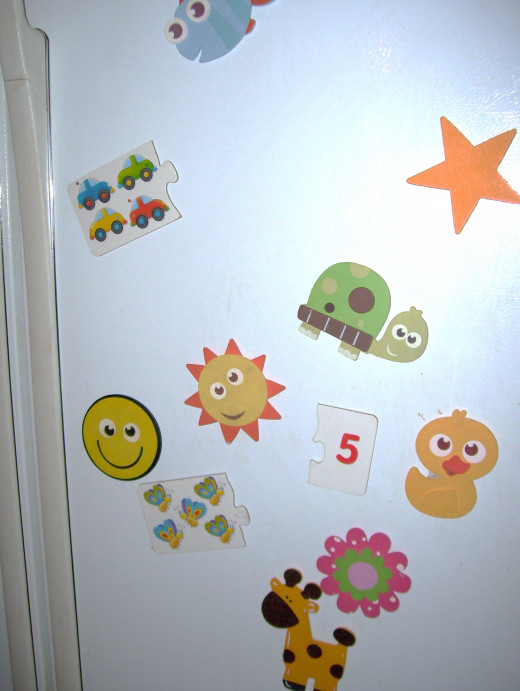
Learning In the Kitchen
It can be more difficult to find safe, interactive things to do in the kitchen. Placing the baby in their highchair while you cook gives them a view of the action without having to worry about them getting hurt.
Take the time to explain what you are doing.
" This is an egg. E is for egg. Watch what happens when I crack the egg in the bowl. See what it looks like? Now I have to stir it."
Plastic Easter eggs are a great, mess free way to imitate cooking an egg. I also provided access to drawers filled with safe items so that she could pretend to cook, or help me by handing me a spoon or towel.
Find some nice, large alphabet magnets for the refrigerator or dishwasher front. Not only are magnets fun, but the letters can help teach the ABC's and colors. They can also be counted. Look for other fun magnets too. I bought several wooden animal shapes at a craft store and glued magnets to the back.
When I am cooking my daughter can play with her magnets, and I can tell her the names of the animals and what sounds they make. We also spell out the names of the animals with the magnet letters. It is helpful to buy more than one set of letters so that you have enough to spell more words. Show your child how to spell his or her name frequently.
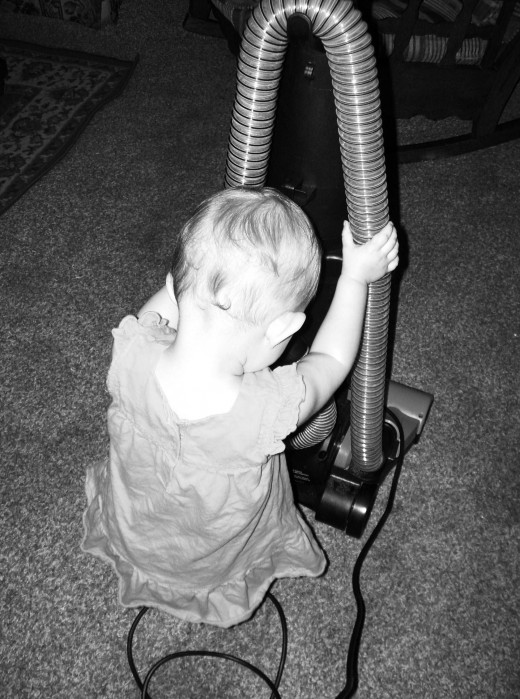
Even Sweeping Can Be Educational
Explain what you are doing when you sweep or mop. Try buying a small whisk broom and pan for your child so they can help.
One of my daughter's favorite toys is a small duster. Whenever I dust she follows along and dusts the things I might have missed, such as her toys or the cat. Small children love to help, and by imitating our actions they build great motor skills as well as object recognition.
If your child isn't afraid of the vacuum cleaner, it can be great fun. Not only does it clean the carpets, but it has several interesting attachments that have to be fitted into the right holders. The vacuum is like really a noisy, puzzle-toy. Use vacuum time as the time to sing silly songs in a loud voice.
Keep up the running dialog even when you move to mundane tasks like making the bed. Yes, it gets tiresome after awhile. Just remember, you are teaching some really hard concepts and getting your housework done at the same time. You are a super multi-tasker!
Your entire house is a classroom. Every object is a lesson ready to be learned.
Praise your Child
Praise a child well for their efforts. This will reinforce a sense of accomplishment and self esteem.
You should never ask or expect a child to do more than his fair share of chores in return for his "keep". Children are not free help and treating them as such is most likely going to make them rebellious.
Fun With Decluttering
Can decluttering really be fun? Sure it can! This is not only the perfect opportunity to teach responsibility for toys and books, it is an adventure in colors, shapes, and textures!
- Buy colored bins, and practice sorting toys away by color
- Talk about where things go, and why. (Pencils go in the desk so we can write with them.)
- Sort toys and other items by size or like-with-like
- Count books as they are replaced on shelves
- Have a race to see who can get the most stuff put away before a timer beeps.
Use your imagination here and you may find yourself loving to tidy up too!
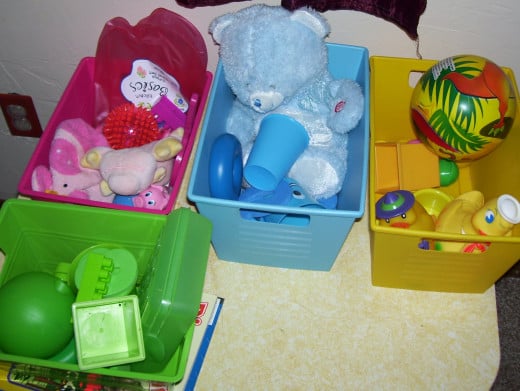
Learning About Health
Even when you are performing tasks that a child cannot help with (such as using cleaning products) you can still keep talking.
Tell them the difference between dirty and clean. Explain germs and bacteria. Go ahead and tell them why they should not touch the cleaners.
This is a good time to introduce concepts such as opposites. Is the fridge open or closed? Is this the inside of the dishwasher or the outside?
Use this part of housework to talk about those concepts of time, too. If a child is getting impatient for your attention, set a timer and explain how it will go off in so many minutes, then you will be done. (or take a break).
Communication and Discovery
It is never too early for A child to hear descriptive words. When you pull up to a store ask " Where are we?" then answer the question.
When you leave a store ask " Where is our car?" Then help them find it. At a very young age they may look or point to cars of the same color.
Using Helpful Distractions
What about when a child cannot help with certain tasks? Like cleaning the toilet or ironing? Time for some distractions!
Always try to be on the lookout for some safe, new activities that will engage their attention if they can't participate in what you are doing. Some good advice I received from another mom was to always have a bag of tricks, and never pull them all out at once.
When my daughter would become frustrated at not being able to help, she would start looking for mischief. I began using special treasure boxes. These were filled with things that my daughter didn't ordinarily play with, but made her feel like she had hit a jack-pot:
- compacts
- cassette tape cases
- plastic combs
- large plastic bracelets
- measuring spoons
- extra baby bottles
- coasters
- eyeglass pouches
- small flashlights
- small gift bags
- empty spice containers.
- clean baby toothbrushes
- small spray bottles filled with water
I never gave these boxes to my daughter. I just set them out and let her "accidentally" discover them. Therefore, they held her attention much longer, and I could get those more dangerous chores done faster.
Other Tips
Don't forget these ideas:
- Use shopping trips to point out colors and letters.
- Take walks outdoors to explore nature.
- Point out birds, butterflies and flowers.
- Use cars passing by the house for colors.
- Encourage children to help put up groceries.This is a great sorting skill. Let them pretend to cook with real food packages.
- When cooking, let them see what food comes from which container.
Always Take Safety Into Consideration
Remember to keep a close eye while you work. Keep all cleaners and anything that has touched toxic chemicals such as sponges or brushes out of a child's reach. Don't forget to cover outlets after use. Make sure that anything dangerous is properly latched or barricaded when you aren't present to supervise.
If they do accidentally touch something they shouldn't, don't just say " NO!". Explain to them why they can't have it. " You can't play with that brush. It has chemicals on it that can make you sick. Play with this brush instead." Or, " Don't put your hand in the garbage can. It is dirty and has germs. Lets wash your hands". They won't learn if you don't explain!
Be firm about things that are off-limits, but try to offer a reason. Adults don't like being told not to do something without justification, neither do children. Also, offer a reasonable alternative if possible. If you are doing something that looks new and exciting, chances are that telling your child to simply go play with their boring, old toys is probably not going to work.
Do you encourage your babies and toddlers to "help"?
So many possibilities...
As long as what you are doing is safe, encourage your child to participate. Keep the conversation going as you look for things to count, colors to name, shapes to identify, and items to match. Read labels, boxes and newspapers out loud, and point out boldly printed letters on different products.
If you can't think of something to say, then sing. No one will hold it against you if they drop by and hear you singing Old MacDonald while you and your baby clean mirrors!
Babies and toddlers love the sound of your voice, and doing things that make you proud and happy. Offer plenty of praise when they try to help or when they correctly identify something by name ( even if all they do is look or point at the item ). Make it fun and engaging, but don't worry if they would rather amuse themselves with their toys when they lose interest.
Most importantly, don't forget to take time out for silly play. Playing is good for your health and happiness as well as your child's, and having you play with them after your work is done is an excellent reward for their patience during the day.
Task
| 1st Lesson
| 2nd Lesson
| 3rd Lesson
|
|---|---|---|---|
Laundry
| Item recognition
| Colors/Sorting
| Counting
|
Dishes
| Item recognition
| Full/Empty concepts
| Counting/sorting
|
Cooking
| Food recognition/food groups
| Colors
| Measuring and mixing
|
Tidying
| Item recognition
| Step-by-step commands
| Sorting/Colors/Counting
|
General Cleanng
| Furniture/appliance names
| Germs/Health
| Opposites (open/close, dirty/clean)
|
Vacuuming
| Cause and effect
| Motors and wheels
| Suction
|
All Tasks
| Item recognition, container names
| colors, shapes,numbers
| Alphabet (V is for vacuum, etc,)
|
Some basic ideas of how to teach while doing housework.Shake it up, don't repeat the same lesson day after day!



